
Train travel enthusiast Amy Underwood Thompson shares some tips for planning and enjoying more environmentally friendly climbing trips around Europe...
I have done quite a few climbing trips by train in the last 10 years and find myself talking to people who are interested in it for different reasons, but who are unsure of practicalities and logistics. I thought I would write an article to share some of my top train tips and suggested trip ideas.
This article was still in draft form in March, so I put it on hold (because who would want to be thinking about travelling in the middle of a pandemic?). However, 3 months later and I'm starting to hear people talking about their ideas for future trips, wanting to make plans they can dream about and look forward to. Across Europe restrictions are lifting, travel corridors are opening and train services are resuming. The European Commission has also proposed making 2021 the European Year of Rail, to support the delivery of its European Green Deal objectives in the transport field, and the European Council is supporting it. So maybe this is as good a time as any to be sharing a bit of train information and inspiration!
*Remember to check travel restrictions and COVID-19 regulations in each country you travel to/through before booking a trip and keep up-to-date while en route - the situation may have changed.
How I got into train travel and my motivations
My first international train journey in relation to a climbing trip was actually both for convenience and the pure glee of putting a whimsical idea into practice. I was planning how I would get home from Italy while my partner continued on his European van trip. We would be climbing in Finale Ligure and I saw on Google Maps that there was a local train station right on the coast. A bit of investigation showed me that I could go from Finale all the way to Bristol city centre by train! So a few months later, after a day's climbing and eating dinner on the beach, I strolled into the station, hopped on an evening train to Milan, caught a sleeper, woke up in Paris, took the Eurostar to London and was home in Bristol that afternoon. I had read my book, sorted out photos, chatted with a nice Italian family whom I was sharing the sleeper compartment with, slept, eaten a croissant from a French bakery, looked out the window and arrived back with my mind gently transitioned from holiday to home mode. It was an amazing journey and my partner had headed off to Céüse without me causing him any awkward airport detours.
For that trip environmental motives were far from my mind, if there had been an airport in Finale Ligure I probably would have flown. However, in recent years my attitude has changed as I have learned more about the impact my travel choices have. For those unaware of the carbon differences, here is a graph comparing the travel options between Manchester and Avignon, France (assuming you are not considering cycling with all your climbing gear!).
Source: https://blog.zerocarbonadventures.co.uk/2020/07/transport-carbon-emissions-which-is.html
I now actively try to avoid flying. However, because of all the reasons I got pleasure from that original train trip, opting to travel by train doesn't feel like a second rate alternative to me, it's actually something I look forward to and get excited about in its own right!
So I hope this is of interest, whether you're wanting to become more carbon conscious with your travel, looking for an alternative to airport lounges or doing shifts behind the wheel of a van, or just intrigued and fancy adding a new element and experience to your next trip away- whenever that may be!
First train journeys! Some ideas...
Note: Example prices, times and services as of Feb 2020 (pre Covid-19).
As of July 2020, Eurostar are planning to increase the frequency of their London-Paris trains from 1 a day (since April) to 6 a day, and Spanish operator Renfe and French National Railways (SNCF) have reintroduced their cross-border services between France and Spain.
I arguably jumped in at the deep end with my train journey from Italy, but trips don't need to include sleeper trains and multiple changes. You can get to a surprising number of European cities direct from London on the Eurostar, and go from home to the crag in less than a day.
France
France is a good first trip to consider. Have you ever been driving south from Calais on the toll road and seen the Eurostar zoom past you at 186 miles per hour? If you would normally take your car or van to France, taking the train will definitely reduce your travelling time and maximise your climbing time - what's not to like?
Example - Seynes/Buoux by train
Home > London by UK train
St Pancras International, London > Avignon 5hrs 49min by Eurostar who normally run a direct service in summer (though they have announced this will not be running in 2020), otherwise you can choose to change in Lille* or Paris. From £99 return in 2nd class
Avignon station > Car hire in a few strides! Then onwards to the crag (an hour's drive)
*Top tip: Changing in Lille means you just change platform - simple! Changing in Paris means using the metro or a taxi to change stations - so you need to allow more time, but good if you want to add some sightseeing into your plan!
Spain
Depending on where you live in the UK, Northern Spain can also be just a day's train ride away! You can travel to Barcelona by high speed trains, hire a car and be at your accommodation that same evening.
Example - Siurana/ Monsant/ Margalef by train
Home > London by UK train
St Pancras International, London > Paris 2hrs 16min by Eurostar. From £58 return in 2nd class
Gare du Nord > Gare de Lyon Paris metro €1.90 (allow 1hr to be safe)
Paris > Barcelona 6hrs 39min by TGV. From €78 return in 2nd class
Barcelona > Car hire in a few strides! Then onwards to the crag (1-2hrs drive)
If it's winter and you want to increase your odds of sunshine and warm temperatures, and are up for a multi day train journey, Southern Spain is also a great destination.
Example - El Chorro by train
El Chorro is a perfect choice as it has its own train station, so no hire car required!
Day 1: Would be as above, but stay overnight in Barcelona (enjoy tapas, architecture, the beach etc.). There are lots of accommodation choices, from basic hostels to hipster AirBnB rooms.
Day 2:
Barcelona > Malaga 5hrs 56min by AVE €92 return in turista class
Malaga > El Chorro 45min, €12.50 return (buy on the day)
It is then a 2km/30min walk to the Olive Branch campsite, passing the Las Encantadas crag if you want to climb before putting up your tent.
Train travel top tips...
Planning & booking
Consult The Man in Seat 61
Whenever setting out on planning a trip by train I always check out The Man in Seat 61 https://www.seat61.com/ as it has amazingly comprehensive and up to date information about train travel in Europe and beyond, including suggested itineraries.
He also has a dedicated page at the moment for Coronavirus related train service updates. https://www.seat61.com/train-travel-in-europe-coronavirus-update.htm
He also advises on where and how to buy your ticket(s), though booking platform https://www.raileurope.com (formerly Loco2.com) is often a good place to start. They cover a lot of train operators, meaning you can buy through-tickets for a multi-leg journey in one purchase. However, I often book Eurostar trains direct with Eurostar, purely because you get to choose your seat from a train plan, so you can make sure you get your favourite options re. window/aisle/table seat, forward or backward facing for travel, UK/EU charging socket, proximity to cafe/toilet/luggage rack etc.
Book early to save money
Doing train travel economically definitely favours the organised. Most train operators have a set allocation of tickets in each price bracket, and when the cheapest ones are gone, they're gone. The key to making sure you get the best price therefore is booking a train when the tickets for it are released. This means planning your climbing trip in advance, knowing which trains you want to take and then having reminders for when each ticket will become available. This may sound complicated but most train booking websites offer a notification service so you are emailed when you can book a train ticket you want.
For example, you can book a Eurostar ticket 6 months in advance, but tickets for onward trains may only get released 3 months in advance. So to get the best deal for your journey, you would book the Eurostar first then your onward train(s) later.
You can still certainly travel last minute, but you may end up paying more.
Also note, buying returns rather than 2 singles will often be a lot better value.
Travel to London the night before
If you don't live in London, it's worth considering whether travelling there the night before will help with your journey schedule and costs. For example, travelling to London on a Friday night means you can take advantage of an early Eurostar crossing on Saturday morning. Often the early times are less popular, so there's more chance of being able to get a cheap ticket, you'll also have a greater choice of onward trains for the rest of your journey that day, and you'll have more time in hand for fun exploring across the channel or getting to your final destination earlier. It is an especially viable option if you have friends or family in London you can stay with (payment in wine on your return!). Or a double/twin room at Kings Cross Travelodge is around £50.
Make a journey timetable
I find it's helpful to have a simple spreadsheet with all the info in one place. It's really useful for planning and keeping track of what trains you've booked. Plus, before you travel, print it out or download to your phone so you can refer to it without having to get out and sift through all your tickets. It's useful for everything from helping you find your train on the departure board to working out if you have time to go to the loo before you arrive at your station.

Research your stations in advance
If the thought of catching a train feels a bit scary, or you are worried about a connection or just want to feel super prepared, there are lots of resources you can utilise before you even set a foot out the door. There are YouTube videos of people doing tours around stations and walking common platform changes wearing GoPros, you can get station floor plans online and guidelines for the time it takes to walk from the station concourse to various platforms. Doing this research can definitely help give confidence, avoid panic and enable you to lead your friends to the correct platform like a pro!
Luggage
Get a holdall with wheels
Obviously if you can fit everything in a rucksack, that's great, but it all depends on the type of trip you're on. After a couple of journeys where my partner and I got powered out carrying a heavy holdall around large stations, we had a lightbulb moment. Whatever you think of wheely bags, they absolutely revolutionise the train travel experience! There does seem to be a stigma around them amongst outdoor folk, but why wouldn't you love something that enables you to glide around with ease, one hand on the handle the other holding your French baguette? The Berghaus mule is now our trusty train trip companion, and it's also great for bringing back wine in!
Life on board
Generally I have found European train travel very luxurious compared to UK trains, even in second/turista class the seats and aisles are spacious and there are plenty of areas for large luggage. You have ample elbow space to get out a laptop, play cards or lay out a picnic and you can stroll along the carriages whenever the fancy takes you. The cafe/buffet/restaurant cars are usually quite a hub, a full carriage with standing tables if not seating. Going and stretching your legs and practising "A glass of red wine please" in the appropriate language is a nice little outing from your seat! The views are pretty good too and it's always a bonus if you find yourself on the top level of a double decker train. Yes you can get double decker trains! Even if you think you have oodles of time stretching ahead of you when you start your journey it's surprising how quickly it goes.
Like most people I have had some crowded and uncomfortable UK train experiences, sitting on my rucksack in a carriage vestibule. All I can say is don't let this put you off planning a longer journey across the channel.
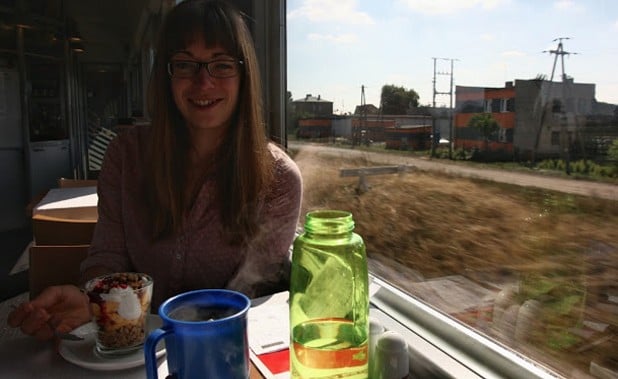
Making the most of travelling overland
Leave the station!
If you have a train change or are spending the night somewhere on a multi-day train journey why not embrace it? Visiting the places where I am changing trains is possibly my favourite part of train travel. They feel like mini trips within a trip! Unlike airports, train stations are often very central in a town or city, so you can do some pretty cool things right off the platform. Most stations have a left luggage facility, so you can unburden yourself of a heavy rope and rack for a small cost and go explore. I have had tapas in Barcelona, espresso in the sun in Alicante, gone for a run round Warsaw, had a swim in the harbour in Copenhagen, had pizza in Naples and wandered the cobbled streets of Cordoba all before onward trains. If your schedule allows, why not intentionally book trains that give you a few extra hours in a place where you want to explore and need to change trains anyway?
You can even check out a local climbing wall, perfect if you want to top up some strength on the way. A quick trip to Vauxwall climbing wall in London sometimes works well before getting on the Eurostar, as it's only a few stops on the Victoria line from St Pancras International.
Travel insurance
Even if you are the type of person who normally doesn't bother with insurance, it's worth considering. As with flights or ferries, trains can be late or cancelled, unplanned things can happen. If you have left a decent chunk of time for your connection, you may just miss out on leaving the station for a Belgian beer in Brussels, but the worst case scenario is missing an onward train. It's then all down to the type of ticket you have, and whether you can just hop on the next available train or whether the ticket was tied to a specific train and you now need to buy a new ticket.
If your train is cancelled or delayed it's worth checking whether you can get a full or partial refund for that ticket from the train operator. This will often mean completing an online form on their website and uploading a photo of your ticket as proof. But they will not usually compensate you for other associated expenses (i.e. buying a new ticket for an onward train), which is where an insurance claim would come in. If you are getting climbing insurance anyway (like BMC) general travel insurance will often also be included as standard. Personally I have only had one missed train connection experience (due to a late train), but was grateful when I realised that my climbing insurance covered me.
If you need to make a claim you will likely need proof that your train was delayed/cancelled - the train company may give you a letter on the train/platform or you can ask for one from a Customer Information Desk at the station.
Travelling further afield
How far can you go?
So there are lots of fantastic climbing destinations within easy train reach in France and Spain, but further afield is certainly do-able too. I have been to Norway, Sicily (where the train goes on a ferry!), Morocco and my furthest trip has been to Russia, Mongolia and China (starting from Bangor, North Wales). Generally the further away you go, the more exciting the train travel part is, and so it definitely feels less like a journey to get to your final destination and more like an adventure!
It's amazing to read that even in the current climate new services are opening. Czech operator RegioJet started a new overnight service between Prague and the Croatian coastal town of Rijeka in June, which has now increased to a daily service due to overwhelming popularity. The options for train adventures just keep increasing!
Common concerns
I often hear that time, money and 'faff levels' are the key barriers to taking the train. I can understand all of these, but I have a few points for consideration to leave you on.
With regard to time, for trips you can do in a day by train, how much time are the alternatives (flying/driving) really gaining you if you consider things door to door? How will you utilise that extra time? Will you be climbing or will you be sleeping after a long drive or an early start getting to the airport? If it is an afternoon's climbing, is that worth the additional carbon emissions?
For destinations further afield that require multi day train journeys, I adjust my trip calendar to accommodate it. In a nutshell, I will make it into a longer trip, taking the time off to make it worthwhile. If you are someone who thought you didn't have the time to travel by train, it's worth considering: could you roll the time you would spend on a couple of shorter trips into one longer one by train? I find longer trips actually really work for climbing, as often the first few days are spent getting to grips with the logistics of the area, the crags and getting fitter, before you get into your stride.
There's no denying that trains are often a lot more expensive than flying. It's a shame that the cheapest way also carries the highest carbon cost. The top tips for booking will hopefully allow you to get the best possible train ticket prices going, and the above suggestion of doing fewer but longer trips is also great for getting the best value for money. However, I do think it really comes down to personal decision making in how you want to spend your disposable income, and if you choose to do a trip by train (for whatever reason) the bargain flight ticket to wherever becomes irrelevant and you just set about planning a train trip which you can afford. In case it helps anyone look at their own budget, I thought I would share my general circumstances - for the past 10 years I have had a yearly income between £15-20 000 a year, have a shared mortgage and no dependents - apart from a crazy spaniel. I have been able to make train travel work within my circumstances, so I suppose I just wanted to say it is possible to budget for without being a millionaire.
It's worth noting that I definitely view the train journey as part of the trip, and think there is value to be had in the experiences you get during the journey, from the people you meet to the extra places you have the chance to explore, plus often being able to arrive at your destination rested and ready to go is valuable too.
With regard to the 'faff level', yes it probably will take more time to plan compared to buying a single plane ticket or hopping in the car. Hopefully though the above top tips can help make doing it for the first time easier. I must say it becomes a lot less daunting after the first time!
Bon voyage
Whenever you decide to hop aboard a train for a trip, I wish you safe and smooth travels and fun adventures.

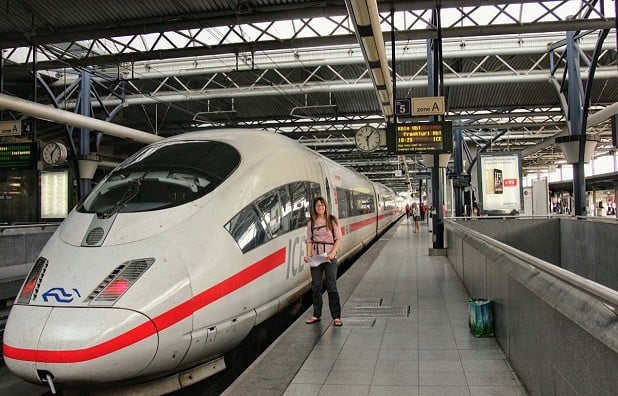
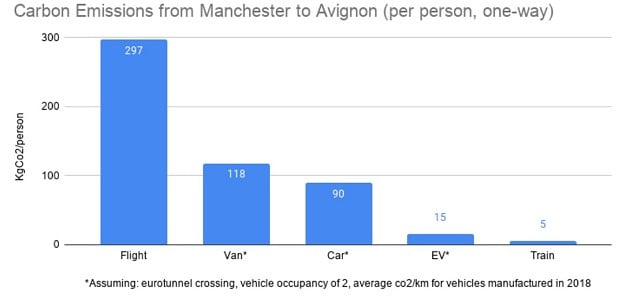

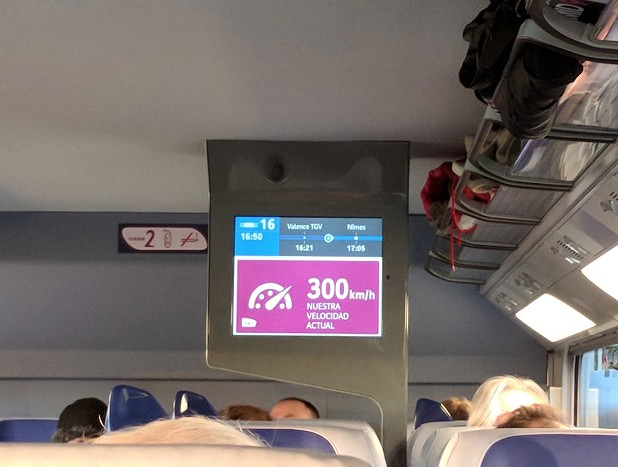
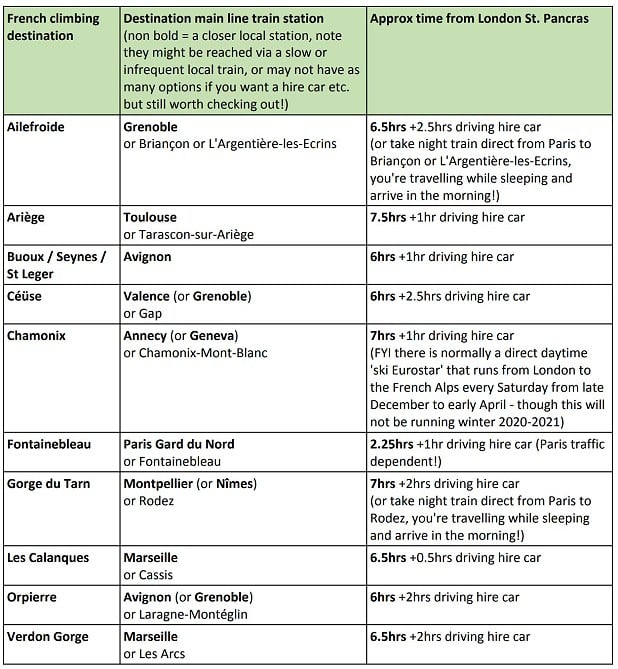
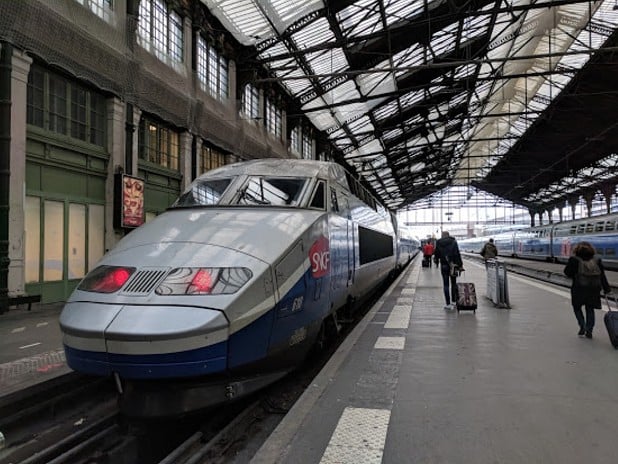
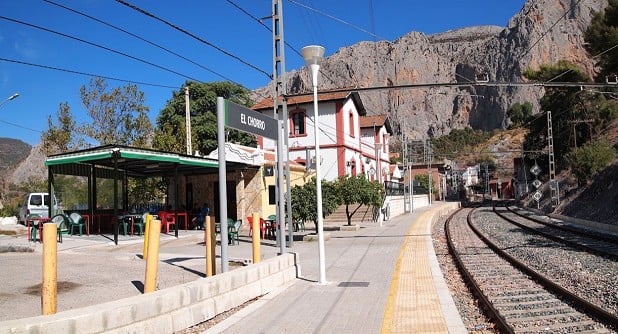


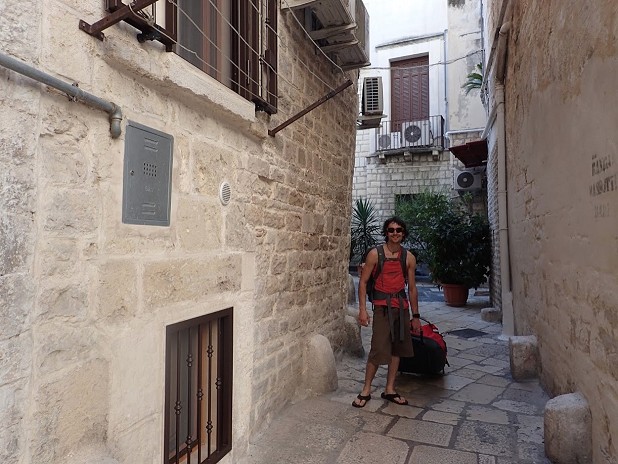

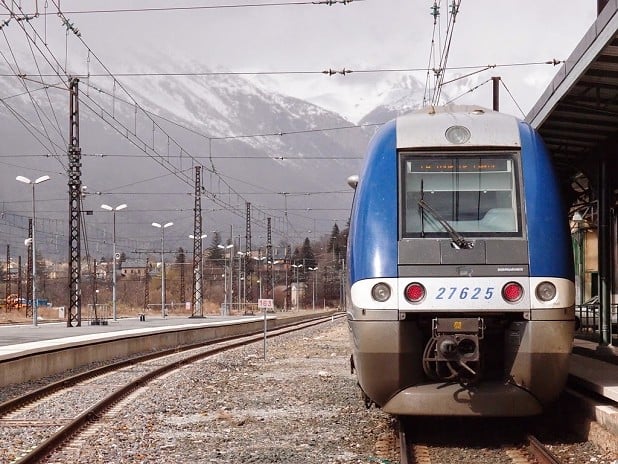
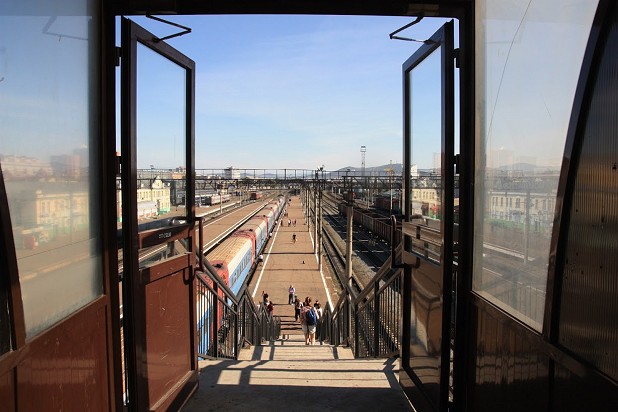
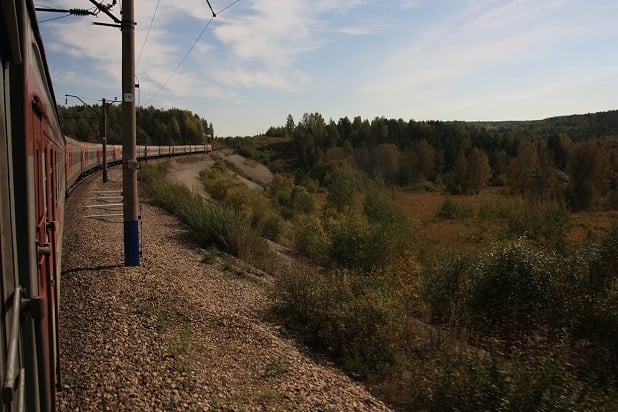

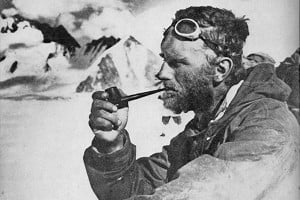






Comments
Agree with the advice , if possible, to stay in London the night before. Several years ago we were booked on the Saturday morning ski train. A six o'clock train morning train should have got us to St Pancras in plenty of time, unfortunately the train was badly delayed and we missed the ski train.
We still got to the resort in the late evening but it needed three trains and two taxi rides. An interesting trip.
Also have climbed in the Bregalia by train to St Moritz and then bus and that was pre-tunnel days.
John
what's the latest news about ice axes & crampons on the Eurostar ?
Great piece. I think we need to see this as the default for European travel going forward and the more information we share as a community the better. I'm as guilty as anyone for having a fairly limited notion of where I might go for a trip abroad, based on where friends have been and what's convenient when flying. A bit more knowledge about what's accessible by train will go a long way.
Also restrictions on fixed blade and folding knives of a certain length. We went to Slovenia by train (car hire at trieste airport in Italy by the border with Slovenia) and could not take our usual picnic knife on the Eurostar to Paris.
Germany tips (feel free to update the article with them)
If you're going to Germany via France then investigate booking on www.bahn.de instead of Rail Europe. Because there are multiple regional train operators and 2-3 high speed train operators in France not all potential connecting trains are available to all operators. We found better connections going to Germany booking with rail europe, and better connections for the return with Deutschebahn. It is also possibly beneficial to book the high speed and local legs separately - in short, have a bit of a play on the booking websites.
German train websites and tickets will normally give you all the info on the platforms and where to sit on the train if it splits etc. which eliminates a lot of hassle looking for the correct platform when changing trains. You can only book 3 months in advance, and prices increase closer to the date of travel.
If travelling with a bike you're supposed to book it.
Tickets - you can buy undated tickets which need to be stamped by a machine on the platform when you use them. Some stations don't have ticket machines, instead you need to use a ticket machine in the train when you get on. These machines may not accept large denomination notes!
Trains from Munich to Garmisch and Austria have ski/snowboard racks in winter and bike racks in summer.
General high speed train tips
The high speed trains in France and Germany always have a seat for every passenger so they're never overcrowded like local trains. Seat numbers are displayed on digital displays on the sides of the carriages so you know which one to get on, they aren't always in a logical order though!
Young kids get spoilt on the ICE and TGV - there's special kids carriages on most trains with play areas, and the conductor will give them a special kid's ticket when he checks yours which they can take to the buffet car and get some free goodies with. You can also specify seats with a table when booking sometimes.
French tips
Gare Montparnasse in Paris is massive, with multiple platform areas / terminals so isn't straightforward to use (especially when there's building works like when I used it last summer - took me ten minutes just to get out of the station!). It's more like an airport with multiple terminals than a station.
One of the high speed train operators (Ouigo?) charges for luggage, yet the booking options don't always allow you to select the luggage option you actually need. It wasn't a problem, but be aware of it.